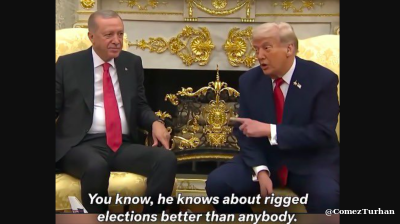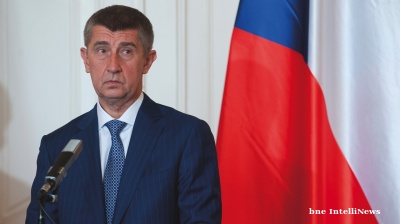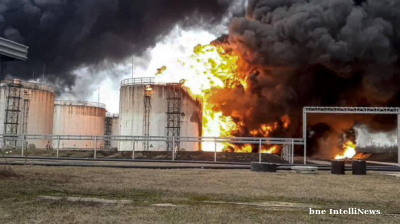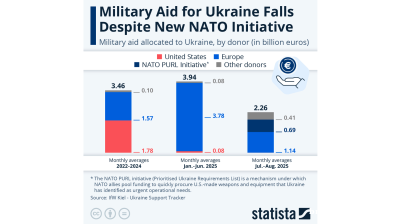Russian gas has been remarkably popular in Europe over the past decade, with its share of demand rising as high as 39% (including sales of both pipeline gas and LNG). However, it has been clear to the Kremlin for some time that this would be unsustainable over the long term due to the impact of the Energy Transition, with the EU leading the world in announcing aggressive decarbonisation objectives, as seen most recently in its “Fit for 55” package. Although gas demand is expected to remain fairly robust to 2030 in Europe, beyond that time it must go into sharp decline if the region’s net zero target is to be met. With this in mind, the Kremlin and Gazprom had already been thinking about how to diversify to new markets, with the growing economies in Asia the obvious target not just because of their expanding need for energy but also because gas offers a cleaner alternative to the huge amount of coal that is burnt in many countries in the region.
Some historical context is useful in understanding how this strategy has evolved and could evolve further in light of the impact of the war in Ukraine. A gas export pipeline to China was first conceived in the Soviet era and was discussed on a regular basis through the 1990s by state gas company Gazprom as well as by private companies such as TNK-BP through the 2000s. However, China didn’t need the gas at that point and so nothing happened. It was not until 2006 that China’s gas import needs started to rise significantly and the prospects for Russian exports improved. However, it took another 8 years before a major export deal could be signed, and interestingly it happened shortly after sanctions had been imposed on Russia following the annexation of Crimea. Not surprisingly, the Chinese parties negotiated from a position of strength and got a very good deal on the price.
Moving forward to 2022 and the situation in Europe with regards to Russian gas has deteriorated dramatically for obvious reasons. Although it is unclear how rapidly Europe can fully diversify away from buying gas from Gazprom, and indeed if imports from Russia will ever actually reach zero given the different attitudes to it across the European continent, nevertheless it is obvious that Russian gas export volumes will decline sharply over the next few years – indeed they are likely to be down by around 45% in 2022. Having sold 150bcm to the EU in the form of pipeline gas and LNG in 2021, current projections see this figure falling to around 80bcm in 2022, with the 35bcm sold to other European countries also likely to decline sharply.
In revenue terms this decline in sales volumes has been more than compensated for by the ten-fold increase in gas prices in Europe, and Gazprom will make record export revenues in 2022. Nevertheless, the search for alternative markets is being stepped up to secure the long-term future of the Russian gas industry. Asia remains the obvious target, with China to the fore, but the process will not be instantaneous. Whereas oil can be loaded onto tankers and transported anywhere in the world, the vast majority of Russian gas is transported by pipeline and for historical and geographic reasons these are mainly pointed towards the west. Indeed, in terms of available capacity, Russia’s export pipelines to Europe could be carrying well over 250bcm per annum if fully utilised.
As mentioned above, Gazprom has struck one deal with China already as in 2014 a long-term contract was signed with CNPC to supply up to 38bcm per annum through the newly constructed Power of Siberia pipeline running from East Siberia to NE China. The political nature of the deal was underlined by the fact that President Putin’s presence in Beijing was required to finalise the agreement, but with his help a contract was signed and pipeline construction began in 2014. It was completed 5 years later in 2019, when gas started flowing, and volumes are currently being ramped up towards their plateau level, which is expected to be reached in 2024 or 2025. Current volumes are around 16bcm per annum.
Gazprom had been making plans to expand its sales to China prior to 2022, and these have now been accelerated. The first option is relatively simple and involves the expansion of the existing contract from 38bcm to 44bcm per annum via Power of Siberia. Gazprom CEO Alexei Miller has already discussed this with his Chinese counterparts and it looks likely to be agreed, with the volumes being added in the second half of this decade.
A second option is to use an existing pipeline in the Far East of Russia, which runs from the island of Sakhalin to Vladivostok, to create a spur line into NE China for exports of gas from new fields offshore Sakhalin. The potential is for volumes to reach up to 10bcm per annum to China (adding to volumes already being used domestically in Russia), and President Putin announced that an agreement had been reached with China in February 2022. However, sanctions have hindered the development of the gas fields that will be needed to fulfil any future contract and as a result progress has stalled and timing is somewhat uncertain.
The largest, and most interesting project for Gazprom involves bringing gas from West Siberia that would otherwise have gone to Europe and re-directing it towards China. Originally called Power of Siberia 2, this line was conceived as flowing gas from Russia into western China at the border between the Amur region of Russia and Xinjiang in China. However, this would have put it into direct competition with gas from Central Asia and would have necessitated significant upgrading of pipeline infrastructure inside China, and as a result negotiations have never reached a conclusion on the proposed 30bcm per annum contract.
Instead, a larger 50bcm per annum deal has been proposed by Gazprom which would essentially involve the re-direction of Power of Siberia 2 to the Mongolian border, from where a new transit pipeline named Soyuz-Vostok would take the gas across Mongolia and into Northern China. Gazprom has apparently agreed the terms of a transit contract with the Mongolian authorities, but it remains unclear what the Chinese reaction is to this new route and the volumes of gas involved. In theory the gas, if priced competitively, should be welcome in an expanding Chinese gas market by the end of this decade, but as yet there has been no official word from the Chinese authorities. With that in mind and considering the length of negotiations over Power of Siberia, it seems unlikely that gas could flow before 2027 at the earliest, with the end of the decade a more likely start date.
Russia also had major plans for growing its LNG business prior to February 2022, and although these are still theoretically in place it is likely that the impact of sanctions will delay progress as much of the liquefaction technology comes from the West. Two main projects, Sakhalin 2 and Yamal LNG, are currently in operation with a combined capacity of 35bcm. Around two thirds of this is already being sold in Asia, but the remaining 14bcm that was sold in Europe in 2021 could easily be re-directed. However, plans for a new project (Arctic LNG-2) have been somewhat stalled, as although the first train is almost complete and is likely to start up in 2023/24, the remaining two trains have been delayed. As a result, another 9bcm could be sold to Asia by 2025, but beyond that it remains unclear whether further expansion will be possible. Novatek has developed its own Arctic Cascade liquefaction process, which can work at smaller scale, but plans for 100bcm of export capacity by 2030 are unlikely to be reached, with 60-70bcm perhaps a more attainable goal.
To conclude, can Russia replace lost European sales in Asia? In the short-term this is unlikely, although it depends how fast and how far exports to Europe fall. If they decline to, say, 50bcm in the next couple of years (a decline of 100bcm from 2021 levels) then this will not be replaceable on a similar timescale as the only real options will be the redirection of current LNG flows and the addition of Arctic LNG 2 train 1 – in total 23bcm – plus the continued ramp up of Power of Siberia flows to 38bcm (22bcm higher than today). However, by the late 2020s the current Power of Siberia contract could have expanded by 6bcm and we could see the Far East pipeline onstream with a further 10bcm, and if contracts can be signed quickly for Power if Siberia 2 / Soyuz-Vostok then initial sales from a 50bcm contract could also have started. Extra LNG projects could also have started, albeit more slowly than hoped, adding another possible 15-25bcm, meaning that by the early 2030 Russia could be sending an extra 116-126bcm of gas to non-European markets. If some gas is still flowing to Europe at that stage, then a re-balancing could have occurred, after a likely dip in export volumes in the 2020s.
James Henderson is the chairman of the Gas Programme at the Oxford Institute for Energy Studies
Opinion

IMF: Global economic outlook shows modest change amid policy shifts and complex forces
Dialing down uncertainty, reducing vulnerabilities, and investing in innovation can help deliver durable economic gains.

COMMENT: China’s new export controls are narrower than first appears
A closer inspection suggests that the scope of China’s new controls on rare earths is narrower than many had initially feared. But they still give officials plenty of leverage over global supply chains, according to Capital Economics.

BEYOND THE BOSPORUS: Consumed by the Donald Trump Gaza Show? You’d do well to remember the Erdogan Episode
Nature of Turkey-US relations has become transparent under an American president who doesn’t deign to care what people think.

COMMENT: ANO’s election win to see looser Czech fiscal policy, firmer monetary stance
The victory of the populist, eurosceptic ANO party in Czechia’s parliamentary election on October 6 will likely usher in a looser fiscal stance that supports growth and reinforces the Czech National Bank’s recent hawkish shift.




